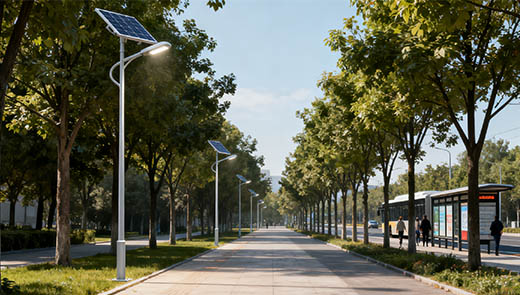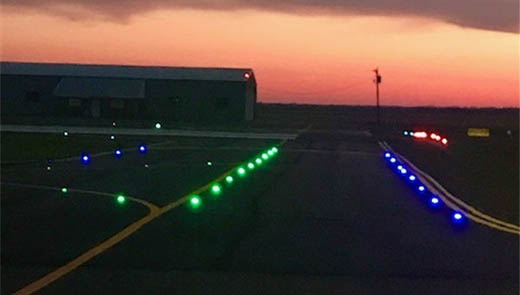Solar Road Studs are an Energy-Efficient Road Safety Solution
As urbanization accelerates and transportation demand continues to rise, ensuring road safety has become a core concern for the global community. While traditional road safety infrastructure has laid the groundwork, its limitations are increasingly evident in low-light environments, adverse weather conditions, or remote areas with unstable power supplies. Solar road studs have emerged as a solution—they integrate renewable energy technology with innovative traffic safety engineering, not only overcoming the shortcomings of traditional road markings but also aligning with the global trend toward sustainable development.
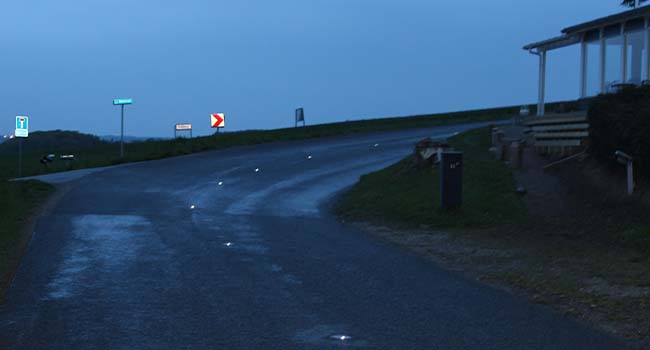
What are Solar Road Studs?
Over the past century, the basic design of traditional road studs has remained largely unchanged. Typically, these studs are composed of reflective material encased in rubber. When a vehicle drives over the stud, it sinks into the metal casing, maintaining its position on the road. When a car passes over the stud, it is cleaned by water or a wiper to ensure it remains clean and maintains its reflective properties.
However, while solar road studs serve a similar purpose, they differ significantly. In solar road studs, LED bulbs are typically encased in extremely durable plastic and then snapped into the metal casing installed on the road, similar to traditional road studs. They utilize green energy through built-in photovoltaic devices to emit light at night, marking road edges and center lines.
How do Solar LED Road Studs Work?
Solar road studs consist of solar panels, LED chips, and batteries. The solar panels are located at the top of the stud, absorbing sunlight and converting it into electrical energy, which is stored in the batteries. The LED lights are positioned on both sides of the stud facing the vehicles, emitting light.
Photoelectric switches are used to transmit LED light through the studs to delineate road edges. Solar road studs are typically used at two key locations for road delineation: along the centerline and along the road edges. The studs must have sufficient load-bearing capacity to withstand heavy vehicles and are installed flush with the road surface, protruding 5 to 8 millimeters above the surface. If installed correctly, the studs have a lifespan of 7 to 9 years with minimal maintenance requirements. Properly installed solar LED road studs have high reflectivity, providing drivers with approximately 25 to 30 seconds of reaction time to control and maneuver their vehicles.
What are the Colors of LED Road Studs?
Solar road studs have LED light beads in five different colors, each corresponding to specific locations on the road and serving distinct guiding functions:
Green LED Road Studs
Green LED road studs are primarily installed on highway on-ramps, off-ramps, and parking areas. Their function is to clearly mark the driving path of the ramp, prompting drivers to exit the highway by merging onto the ramp from the main lane or safely merge into the main lane from the ramp, thereby avoiding lane-changing confusion caused by poor visibility at the junction of the ramp and main lane.
Red LED Road Studs
Red LED road studs are arranged along the left side of the road (near the shoulder) to separate the driving lanes from the hard shoulder. The red light clearly indicates to drivers that this is the end of the road edge and the start of the hard shoulder, warning vehicles not to veer off the lane onto the shoulder, especially at night to effectively prevent vehicles from accidentally veering off the road due to misjudgment.
Amber LED Road Studs
Amber LED road studs are commonly found along the edges of central median strips on two-way lanes or highways, arranged along the right side of the road (near the central median strip). Their function is to mark the boundary between the driving lane and the central median strip, reminding drivers to pay attention to the position of the road centerline and avoid crossing it during overtaking or passing maneuvers, which could cause collisions with oncoming traffic.
White LED Road Studs
White LED road studs are primarily installed on the lane dividers of two-way roads or highways to demarcate adjacent lanes. The white light guides drivers to stay within their current lane while also serving as a visual reference for safe overtaking in sections where overtaking is permitted, helping drivers assess lane width and spacing.
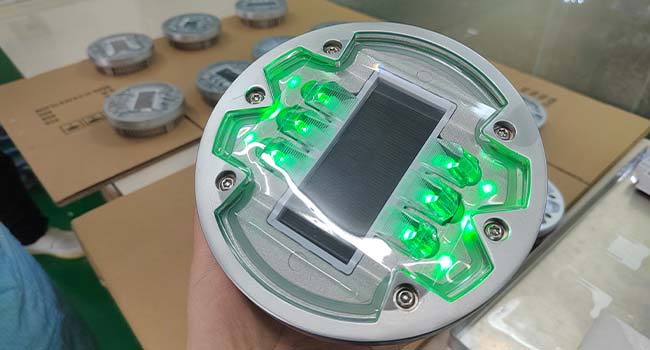
Yellow LED Road Studs during Temporary Traffic Diversion
Yellow LED road studs are specifically designed for temporary traffic diversion sections, such as during road construction or maintenance. The prominent yellow light alerts drivers to route adjustments due to construction ahead, complementing temporary speed limit signs to guide vehicles to follow the new route in an orderly manner, thereby reducing traffic conflicts in the construction area.
How Solar Road Studs Improve Road Safety
Enhanced Visibility at Night
Solar road studs provide bright illumination for roads, ensuring high visibility at night. Unlike traditional road markings, solar road studs are powered by solar energy and do not require an external power source. They use LED lighting, which can be seen from a great distance. This feature helps drivers clearly see road boundaries and avoid accidents caused by misjudgment or distraction.
Marking Lane Dividers and Boundaries
Solar road studs are ideal for marking lane dividers, road edges, and curbs. In areas where road markings are worn or unclear, these studs provide a visible alternative. They help drivers stay within their lanes, especially in low-light conditions or during rain. This reduces the risk of lane departure accidents while improving overall traffic flow.
Alerting Drivers to Hazards
Solar road studs can be strategically placed to alert drivers to potential hazards. For example, they can be installed at sharp curves, intersections, or construction zones. The bright light emitted by solar road studs attracts drivers' attention to these areas, ensuring they slow down and remain vigilant. By providing visual warnings, solar road studs effectively prevent accidents in hazardous areas.
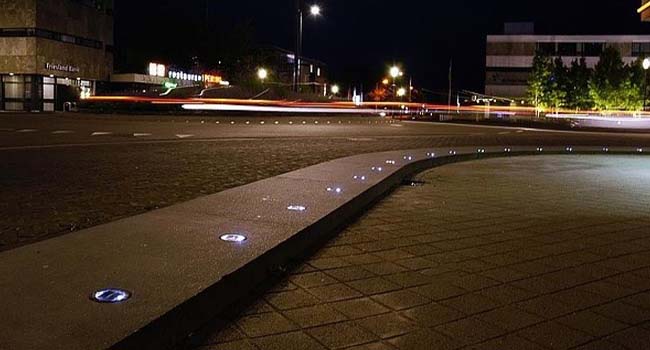
Improved Weather Conditions
In adverse weather conditions such as fog, rain, or snow, road visibility significantly decreases. However, solar road studs remain effective in such environments. Their design can withstand rain, fog, and even snow, ensuring that drivers can always see them. This capability makes solar road studs particularly practical in regions with frequent adverse weather conditions.
Eco-Friendly and Cost-Effective
Solar road studs do not require an external power source. They charge during the day using solar energy, reducing dependence on electricity. This not only makes them environmentally friendly but also highly cost-effective in the long term. Since they require no wiring and no frequent battery replacements, solar road studs are a sustainable solution that is both cost-effective and energy-efficient.
Low Maintenance
Solar road studs are durable and require minimal maintenance. They are cast with high-strength, wear-resistant materials and feature sealed, moisture-resistant internal components, designed to withstand extreme temperature fluctuations from -40°C to 70°C, heavy rain and snow, and thousands of vehicle crushing per day. Equipped with a high-capacity lithium battery and efficient photovoltaic panels, a single charge can sustain continuous operation for over 15 days in cloudy or rainy conditions, with a lifespan of up to 5–8 years. Once installed, no wiring or external power source is required; simply clean the photovoltaic panels every six months to ensure continuous efficient operation, significantly reducing long-term maintenance costs.
Application of Solar Road Studs
Pedestrian Crosswalks and Pathways
Pedestrian safety is equally important, especially in crosswalk and sidewalk areas. Solar road studs can be strategically placed to delineate crosswalks, alerting drivers and pedestrians to these designated areas. The light they emit serves as a visual cue, prompting drivers to slow down and yield to pedestrians, thereby reducing the likelihood of accidents and promoting safer interaction between vehicles and pedestrians.
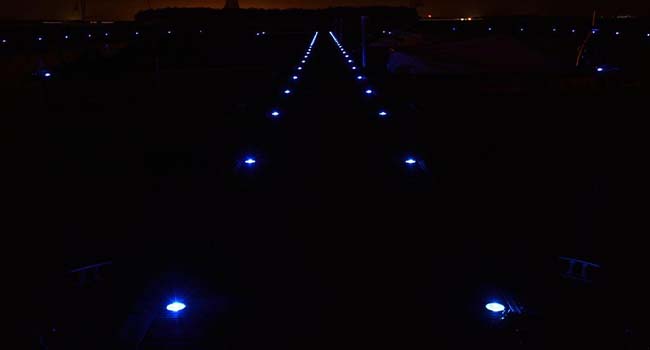
Bicycle Lanes and Cycle Tracks
As the importance of promoting sustainable modes of transportation such as bicycles continues to grow, so does the demand for dedicated bicycle lanes and cycle tracks. Solar road studs can be installed alongside these lanes to delineate boundaries and enhance visibility for cyclists in low-light conditions. By improving cyclist safety, these studs encourage more people to choose environmentally friendly modes of transportation, thereby contributing to environmental protection.
Airport Runways and Taxiways
In the aviation sector, safety is paramount, especially during takeoff, landing, and taxiing. Solar-powered road studs are used on airport runways and taxiways, serving as runway edge lights and taxiway guidance markers. Their reliable lighting helps pilots navigate accurately in airport environments, ensuring safe and efficient air traffic management, even during night operations or low-visibility conditions.
Marine Docks and Waterways
Solar-powered road studs are not limited to land-based applications; they can also be used in marine environments such as docks, breakwaters, and waterways. Installed along dock edges and waterway edges, these studs provide clear guidance for vessels, particularly at night or in areas with limited lighting infrastructure, facilitating safe navigation and berthing. Their durability and waterproof properties make them highly suitable for maritime applications, where reliability is critical.
From urban highways to remote mountain roads, from pedestrian crossings to airport runways, solar-powered road studs are redefining safety standards in transportation infrastructure with their unique “active lighting + clean energy” advantages. They not only address the failure issues of traditional road markings in complex environments but also offer a practical solution for sustainable transportation development with their low-cost, low-maintenance, and eco-friendly characteristics. It is foreseeable that solar road studs will become a key driver in global road safety upgrades, establishing a “bright defense line” for all road users, making travel safer, more efficient, and greener.


